BookThink and the Mind of ManPart I: What Makes Books Important to Collectorsby Craig Stark #164 25 October 2012 |
One of the most valuable books booksellers can add to their reference libraries is a book I have never mentioned at BookThink,
let alone featured in our somewhat irregular series "Building a Bookselling Reference Library." It's not an obviously useful reference
like, for example, Zempel and Verkler's First Editions: A Guide to Identification, and maybe this is why I've put off mentioning
it as long as I have: It will take some doing to persuade some of you to spend $50 to $100 for the pleasure of owning it.
Nevertheless, I'm going to try; I think it's that important.
Before I get to this book in Part II, however, I think it will clarify things if I first look at what it is that makes books desirable to collectors. Admittedly, there are many reasons why collectors will spend serious money for one book and pass on another, but I think it's possible to present several broad categories under which most of their reasons fall. Having this basic understanding clearly in mind will help any bookseller approach collectors with the best inventory possible, not to mention better capitalize on the reference book I'll discuss later.
Consider these five categories as candidates:
Bibliographic Position
Historical Impact
Literary Quality
Physical Beauty
Sentiment
1. Bibliographic Position is a category readily grasped. Putting aside the obvious example of the Gutenberg (or 42-line) Bible,
the first substantial book to be printed from movable type, let's look at an important book that really hasn't got much of anything
going for it but its bibliographic position - The Bay Psalm Book, or The Whole Booke of Psalmes Faithfully Translated into English Metre.
Printed in 1640 by Stephen Day, it's the first extant publication produced in America - or what was to become America. I say extant
because Day published a pamphlet and almanac prior to it, though no known copies of these exist. There are 11 known copies of the Bay Psalm Book.
Here is the Library of Congress beauty:
Doesn't exactly make your heart pound, does it? Add to this the fact that Day was not an accomplished printer and its content consisted
of more or less clumsy, metrical translations of the Psalms designed to be sung in church, and it becomes clear why bibliographic position
can be huge. If a copy came up for auction, the outcome would soar straight to Heaven.
2. Significant Historical Impact can drive values skyward too. Though not what we ordinarily think of as a book, the so-called
Columbus Letter, or Epistola de Insulis nuper inventis, first published in 1493 as a small, two-leaf folio, had an impact far beyond its
humble appearance:
The letter was an account of Columbus' first voyage to the New World, and it publicized far and wide, for the first time, the very existence of it, massively stimulating further exploration, exploitation and trade, and shifting the epicenter of economic and political power from the Mediterranean to the Atlantic. Imagine how this must have impacted the individual too - instantly opening/expanding one's mind to a universe of possibility. Only one copy of the presumed original exists, but additional bound and illustrated copies soon followed, and ironically it was one of these that bookselling legend H.P. Kraus, fleeing Nazi Germany, brought with him to bankroll a new beginning in America.
3. Literary Merit, usually but not always applied to fiction, is another major driving force for collectors, and bibliographic
position usually factors in. Occasionally, as in the case of Shakespeare, literary merit is virtually unshakable and early examples of
his plays in Quartos or collected works in the Folios are among the most sought after books in the trade. The Cornell copy of the First Folio:
Here, perhaps more so than any other category, is where we booksellers experience a phenomenon I have previously described as the
Gone with the Wind effect. Content is so sought after and first examples in print so dearly priced that many collectors
are forced to step down to affordable early or special printings and, as well, seek material associated with the author or the author's work.
I can't stress enough that cultivating a nose for literary merit can greatly enhance your ability to make money. Read, in other words. And
read more. We've all heard the classic dumb bookstore question, "Have you read all of these books?" I'm not saying read anything; read enough
great stuff, Shakespeare included, to develop a strong evaluative skill.
4. At times, Physical Beauty can trump anything and everything, and in this category, examples abound. Beauty can be found in bindings, paper, illustrations or typeface design - or all of the above and more. Quietly showing, not telling, is all that's required. A ca. 1800 William Blake illustration of Jacob's Ladder from an early Bible:
5. Of the five categories, Sentiment is perhaps the most elusive because it's the most idiosyncratic. It's also broad. As booksellers, there will be occasions when we just can't anticipate what will appeal to individual buyers, or even small groups of buyers. A book that, to our eye, may have virtually nothing going for it could be a precious object to somebody who has an emotional, perhaps childhood connection to it. Or it could be a book once owned by a loved one that otherwise is of little or no interest. Or it could be something so bad that it takes on a sort of upside-down cachet. Who was that famously bad poet? Julia Moore? The Sweet Singer of Michigan? Pretty awful poetry, and pretty collectible now.
Look for Part II soon.
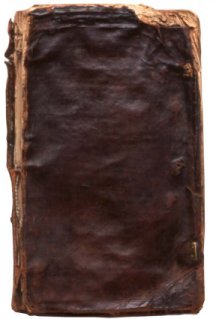
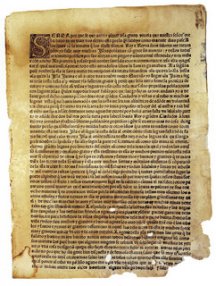
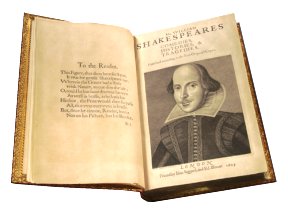
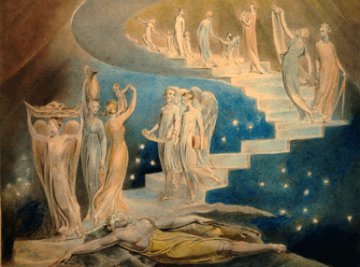
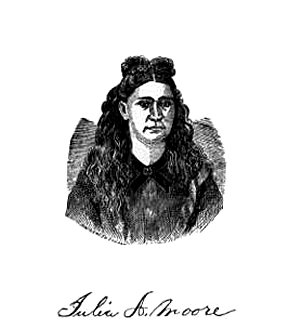
Copyright 2003-2012 by BookThink LLC